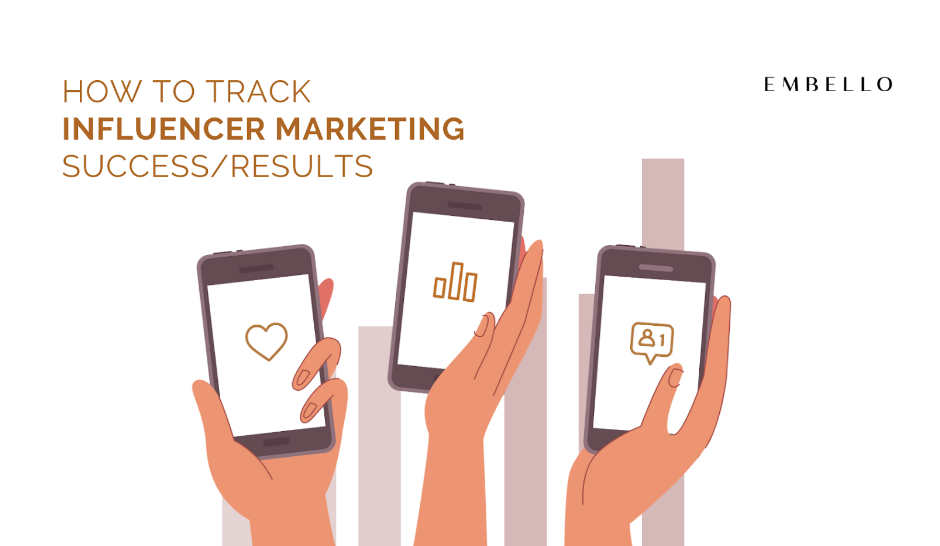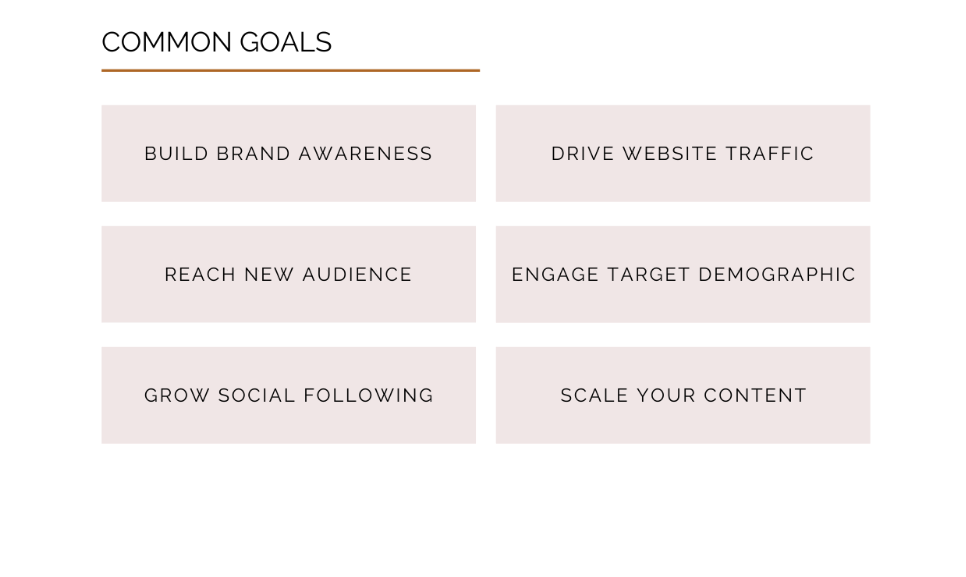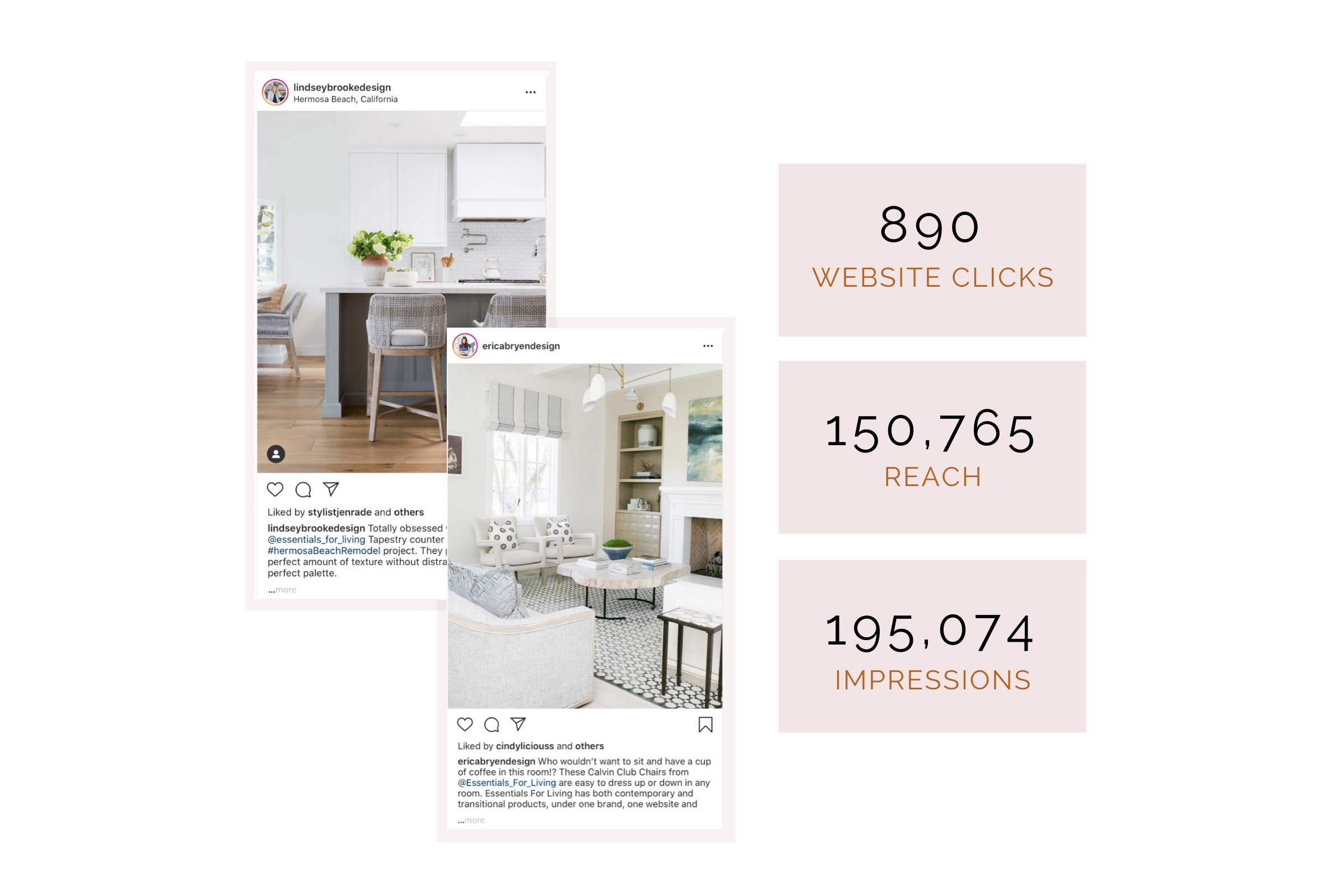The Black Artists + Designers Guild partners with Embello to raise funds for Obsidian through influencer programming
The Black Artists + Designers Guild (BADG) has partnered with Embello to execute an influencer fundraising campaign.

Influencer marketing is quickly becoming an essential part of brands’ marketing mix as more and more teams allocate money towards influencer marketing. 67% of marketers increased their influencer marketing budget this year, as its popularity and success have grown.
Despite this, there is still skepticism around influencer marketing because, unlike other digital marketing methods like paid ads and Adwords, there is some vagueness about how to track influencer marketing success. Even with the perceived lack of clarity, influencer marketing gets you a 520% return on what you invest in earned media value.
Sounds amazing, but how do we track influencer marketing success and break it down into actual numbers and understandable metrics?
Going into a campaign, it’s important to narrow down why you’re doing the campaign in the first place. A benefit to influencer marketing is that you can achieve different goals through it. For example, building brand awareness, increasing traffic to your website, growing your social media pages, receiving more user-generated content, etc. You can often tackle a few of these goals in one campaign, but it’s important to identify what is most important to you and know how to measure these. For example, if your goal is to increase engagement, you need to determine what “engagement” looks like on paper for you. Does your brand want more likes on social media, more followers, more comments? If an increase in traffic and sales is your goal, do you want to see more unique visitors from social media or tracked conversions? Decide on your KPI’s (key performance indicators) ahead of time so you can track them in relation to your campaign.

You can’t determine improvements without knowing your baseline performance. You will need to incorporate a way to track your current traffic on both your website and social pages. Google Analytics is great for tracking your traffic on all pages of your site while pulling your social stats from your social media admin pages. Dashboard tools like DashThis make taking a look at these numbers at a glance easy. Take a snapshot or record where you are currently for your KPI’s so you can make comparisons.
The jump between social and website traffic causes a lapse or blur in analytics. It’s hard to determine where people have heard about you and your products on social media. To “bridge the gap” and see that correlation during your campaign, use direct links to your site where you can on social media. Instagram allows swipe-up links on stories that you can see reflected in your Google Analytics traffic. Facebook and Pinterest allow direct links as well, which can be tracked. It’s also good to use Bitly links. Bitly is a tool that helps you shorten and simplify links as well as organize and track them on the Bitly dashboard.
In order to really track social traffic from your campaigns, you need to use UTM links. This is about to get a little technical but it will save you a headache later on. In Google Analytics, when traffic comes in through social, it can come in simply as “social” or “direct traffic” without specifically disclosing the referral or source. Using a UTM link will allow you to see exactly what traffic coming in on your pages is from your campaign and from which social media platform and influencer. To create a UTM link, you add parameters via code to your link so that Google can apply those parameters to traffic that comes in. For example:
If your link is embello.com
And you want to know if someone came to the link through your influencer campaign, you can add a “campaign” UTM parameter and a “source” parameter so when you check Google Analytics, you will be able to see traffic coming in from your campaign on Instagram specifically.
Your UTM link would be:

You can see how useful this could be for influencer campaigns on multiple platforms and multiple influencers. You can give all influencers the same links for all platforms or you can give influencers individual links for each platform so you can see who brings the most traffic and which platform was the most successful.
The nature of what makes influencer marketing hard to track is that you have different accounts posting on behalf of your brand. You lose a lot of the ability to see analytics yourself for your posts. To be able to collect more data and get a full picture, require campaign stats screenshots from the influencers’ social profiles as part of the deliverables for the campaign. After the campaign, influencers can share screenshots on their stats for the posts and stories. Make sure they collect all data within 14 days because some data points, for example stories, disappear! With this information, you can figure out your total reach, impressions, and engagements. At Embello, our clients get all of the influencers’ data aggregated together in one easy to read report.

Speaking of social stats, they can be exciting but understanding their value is key to determining the success of your campaign. Thousands of social media impressions is impressive, but what if post engagement is low? What does it mean for you if a campaign resulted in a low reach but engagement rate was above average? This goes back to your goals. If your goal is to improve your social engagement, a higher engagement rate is a success. If you want to reach new audiences, a wider reach in a new demographic sector is a success. It’s important to relate metrics directly to your company goals so you can determine what is working for you.
The more you can track success, the more you can refine and improve your strategy, taking full advantage of the benefits of influencer marketing.